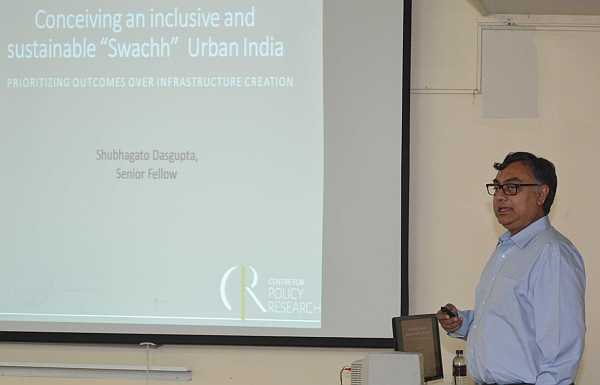Delivering a talk at the Asian Institute of Technology (AIT) on 25
August 2015, Mr. Dasgupta dispelled the notion that the sanitation is a
purely rural problem. Even in urban India, 52 per cent of the
population do not have access to toilets, he said. He outlined the
issue in a global policy context, quoting the example of the Great
Stink of 1858, when the stinking River Thames led to closure of the
British Parliament for a week.
Relating the Indian sanitation program to the Millennium Development
Goals (MDGs) and the Sustainable Development Goals (SDGs), Dasgupta
highlighted that under the “Clean India Mission,” or the Swachh Bharat
Abhiyan, the Indian Government has fixed 2019 as the target year for
ending open defecation, which is earlier than the SDG goal of 2030. He
also outlined the role played by previous governmental programs like
the Manual Scavenging Act of 1993, National Urban Sanitation Policy,
and the Central Rural Sanitation Program.
Mr. Dasgupta was introduced to the audience by Dr. Thammarat Koottatep
of Environmental Engineering and Management (EEM), School of
Environment, Resources and Development (SERD), who highlighted the role
played by the speaker in providing policy inputs to the Clean India
campaign.

